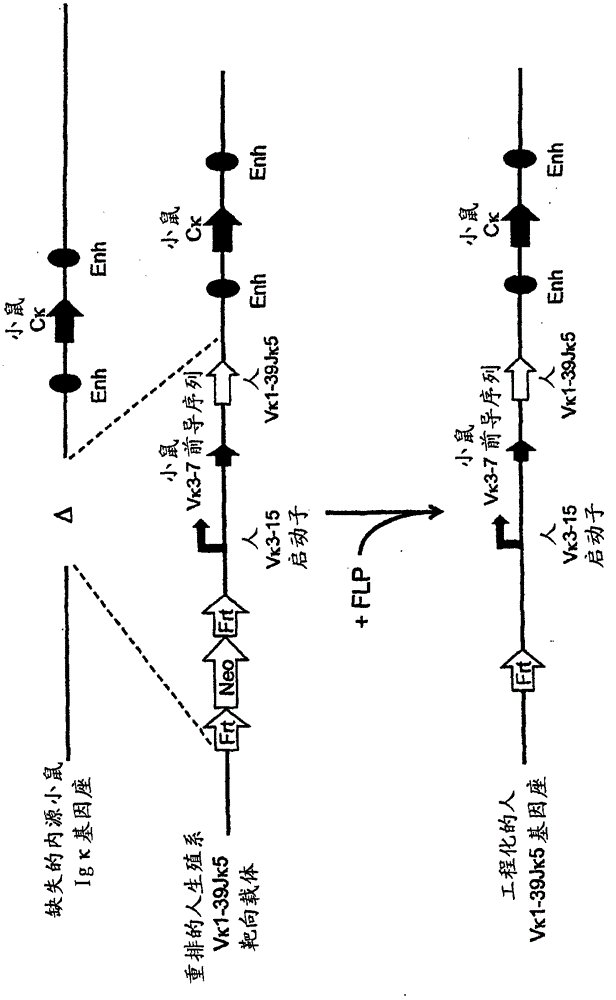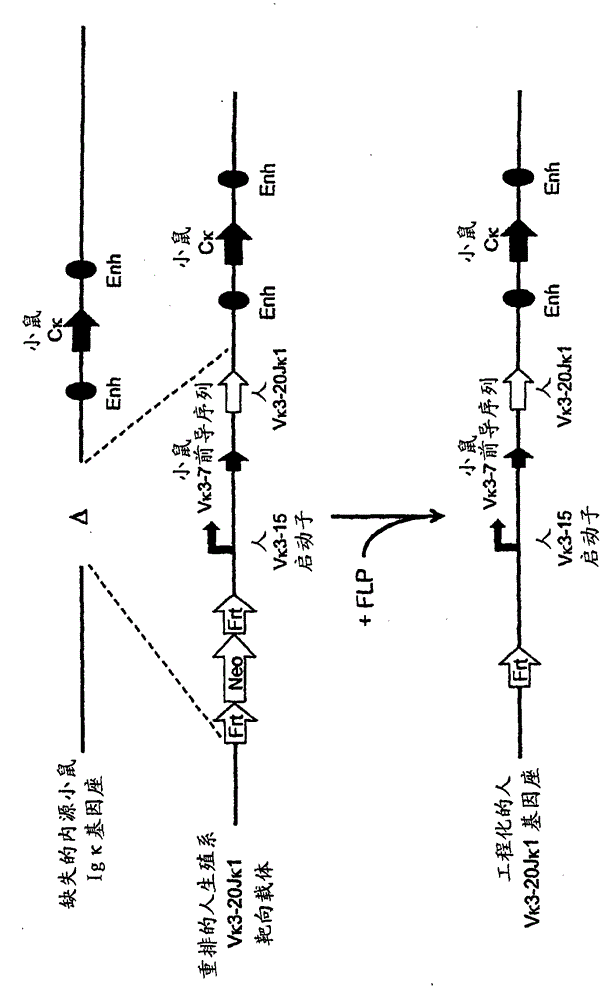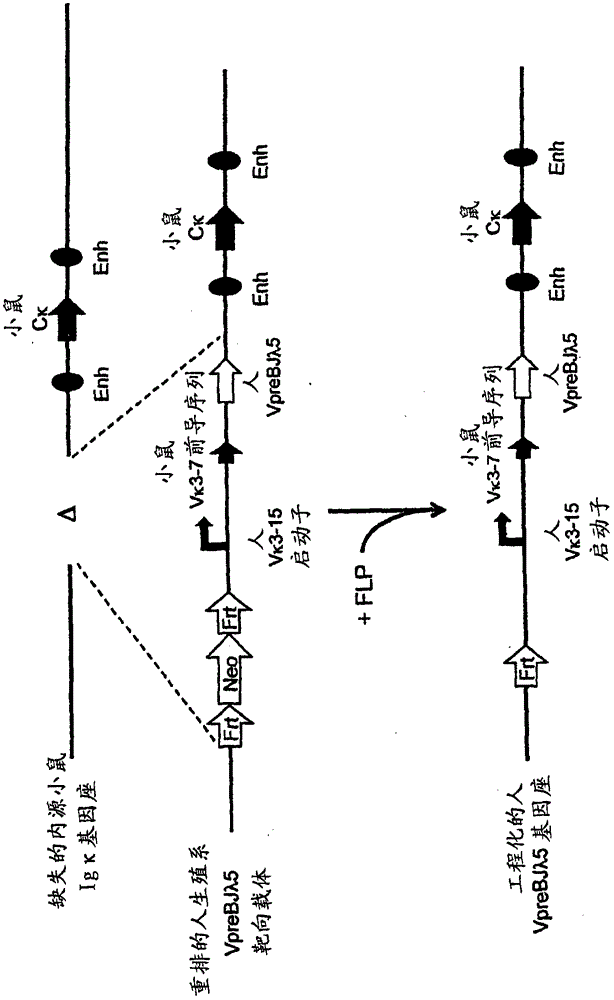Methods for making fully human bispecific antibodies using a common light chain
A bispecific, light chain technology, applied in the field of preparing fully human bispecific antibodies using common light chains
- Summary
- Abstract
- Description
- Claims
- Application Information
AI Technical Summary
Problems solved by technology
Method used
Image
Examples
Embodiment 1
[0258] with the selected person V L human V H District identification
[0259] An in vitro expression system was constructed to determine whether a single rearranged human germline light chain could be co-expressed with a human heavy chain from an antigen-specific human antibody.
[0260] Methods for producing human antibodies in genetically modified mice are well known (see e.g. US 6,596,541, Regeneron Pharmaceuticals, ). The technique involves producing a genetically modified mouse having a genome comprising human heavy and light chain variable regions operably linked to endogenous mouse constant region loci such that the mouse responds to antigenic stimulation to produce human variable regions and Antibodies against mouse constant regions. Encoded from The DNA of the variable regions of the heavy and light chains of the mouse antibody is fully human. First, high-affinity chimeric antibodies with human variable regions and mouse constant regions are isolated. Antib...
Embodiment 2
[0272] Generation of rearranged human germline light chain loci
[0273] use technology (see, for example, US Patent No. 6,586,251 and Valenzuela et al., (2003) High-throughput engineering of the mouse genome coupled with high-rESolution exprESsion analysis, Nature Biotech. 21 (6): 652-659) to prepare multiple recombinant A row of human germline light chain targeting vectors was used to modify the mouse genome bacterial artificial chromosome (BAC) clones 302g12 and 254m04 (Invitrogen). Using these two BAC clones, genomic constructs were engineered to contain a single rearranged human germline light chain region and inserted endogenous κ that had been previously modified to delete endogenous κ variable and linking gene segments Light chain locus.
[0274] Construction of a rearranged human germline light chain targeting vector. Three different rearranged human germline light chain regions were prepared using standard art-recognized molecular biology techniques. The human v...
Embodiment 3
[0290] Generation of mice expressing a single rearranged human light chain
[0291] The targeted ES cells described above were used as donor ES cells and passed Methods (See, e.g., US Patent No. 7,294,754 and Poueymirou et al., (2007) F0 generation mice that are ESsentially fully derived from the donor gene-targeted ES cells allowing immediate phenotypic analyzes Nature Biotech. 25(1):91-99) Introduce mouse embryos at the 8-cell stage. Independently engineered human germline VK1-39JK5 light chains were identified by genotyping using a modified allelic assay (Valenzuela et al., supra) that detects the presence of a unique rearranged human germline light chain region Region, Vκ3-20J1 light chain region or VpreBJλ5 light chain region
[0292] Pups were genotyped and mice that were heterozygous or homozygous for the only rearranged human germline light chain region were selected for characterization of expression of the rearranged human germline light chain region.
[0293] ...
PUM
 Login to View More
Login to View More Abstract
Description
Claims
Application Information
 Login to View More
Login to View More - R&D
- Intellectual Property
- Life Sciences
- Materials
- Tech Scout
- Unparalleled Data Quality
- Higher Quality Content
- 60% Fewer Hallucinations
Browse by: Latest US Patents, China's latest patents, Technical Efficacy Thesaurus, Application Domain, Technology Topic, Popular Technical Reports.
© 2025 PatSnap. All rights reserved.Legal|Privacy policy|Modern Slavery Act Transparency Statement|Sitemap|About US| Contact US: help@patsnap.com



